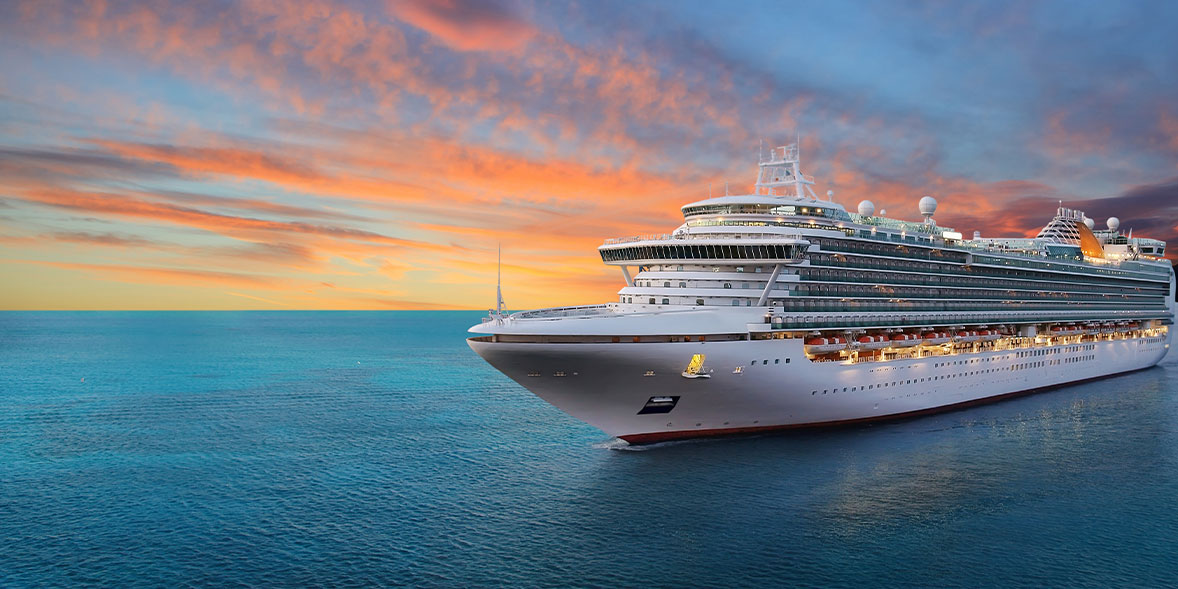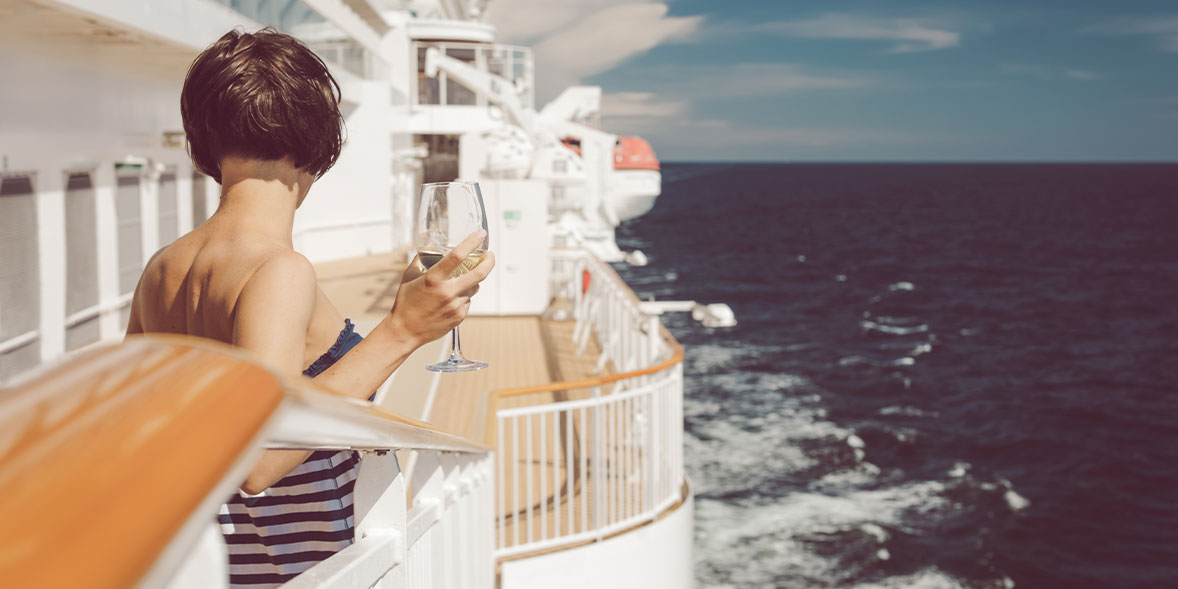6 cruise rip-offs and how to steer clear of them

Some cruise lines entice you with a bargain headline price, but expensive extras soon add up when you’re on board.
You can easily spend hundreds of pounds on drinks, service charges and wi-fi. And if your mobile accidentally connects to the ship’s satellite network, you could run up a costly phone bill.
Solo travellers can end up paying over the odds for a poky cabin, while some passengers told us they landed a big bill after needing medical treatment.
Read our editors' picks for winter holidays this season.
Costly service charges
Many American cruise lines automatically add a daily service charge to your on-board bill.
For example, Norwegian Cruise Line has a fixed service charge of $20 (£16) per person, per day, which adds up to around £220 per couple for a one-week cruise. No wonder two fifths of NCL passengers told us they were unhappy about it.
It also slaps on a 20% service charge when you buy a drink or eat at a specialty restaurant, or purchase a drinks or dining package. You can adjust the daily service charge if you’re unhappy about the customer service on board and the issue isn’t sorted out.
Remember to factor these charges when deciding whether to book a cruise, so you don’t get a nasty surprise when you pay your bill. Look out for promotions that include pre-paid gratuities or book with an operator that includes tips, such as Marella or Saga – both are Which? Recommended Providers.
Pricey wi-fi
If you want to browse the internet or send a few WhatsApp messages while on a Cunard cruise, you’ll be charged $24 (£19) for 24 hours of wi-fi. Fancy streaming a podcast or TV programme? Its ‘premium’ wi-fi package will cost you $36 (£29) for 24 hours, or $140 (£113) a week – and you can only use one device at a time. Cunard only got two out of five stars when we asked passengers to rate whether the wi-fi was good-value.
Fred Olsen and P&O also scored a dismal two stars for wi-fi. Fred Olsen charges £12 a day or £63 a week for its basic wi-fi package. P&O charges from £18 to £24, so a week of its speediest wi-fi plan will cost you a staggering £168. To make matters worse, wi-fi at sea is often patchy and slow, especially if there’s bad weather.

Most river cruises and some all-inclusive cruises include wi-fi, but ocean cruise lines tend to charge extra. The easiest way to avoid racking up a hefty wi-fi bill is to ration your usage and download any music, podcasts or TV programmes you might want before you board.
If your cruise is around Europe, it’s probably cheaper to contact family and friends while you’re in port, even if your mobile provider no longer offers free roaming in the EU. If you’re travelling outside of Europe, check if your network offers an add-on that reduces roaming costs. For example, EE’s £15-a-month roaming pass lets you use your allowance of data, calls and texts in Europe, the USA, Canada, Australia, New Zealand and Mexico at no extra cost. Remember to cancel it when you get home or you’ll be charged every month.
Sky-high mobile bills
While you’re at sea, your phone may seek out the ship’s satellite connection, which can mean making a call becomes very expensive.
For example, EE’s pay-monthly customers are charged £3.11 per minute to make and receive calls, and listen to voicemail messages, so a 30-minute call would cost you £93. Even sending a text message costs 76p.
Three charges £6 for every single megabyte its customers use at sea, so looking at Facebook for 15 minutes would cost you £30. It caps maritime roaming charges at £45 a month, but it wouldn’t take long to rack up a bill that high.
Your mobile could also connect to a neighbouring country’s network and you’ll be charged accordingly. To avoid being hit by a hefty roaming bill from your mobile provider, switch your phone to flight mode while on board (you can still connect to the ship’s wi-fi and use wi-fi calling). You can also set up your own spending cap.
How to save money on mobile roaming charges
Drinks packages that cost a packet
The exorbitant price of some drinks packages means you’d have to drink like a fish to get your money’s worth.
For example, Cunard’s is $72 (£57) per person per day for a seven-night cruise, so you’d need to knock back eight glasses of wine (approximately £7 each) or 10 beers (£6) every day for a package to work out cheaper than buying your drinks separately.
Celebrity Cruises adds a 20% service charge, so its standard £70 drinks package ends up costing £84 per day.

Some cruise lines also dictate that both people in a cabin must buy a package (to prevent sharing) for every single day you’re at sea. You can't get a refund if you decide not to drink for a day or two.
Before splashing out on a drinks package, check the bar prices online and do the sums to see how much you have to put away. Keep an eye out for deals that include a drinks package or consider booking with an all-inclusive cruise line.
Find out how much you’d have to consume to justify a P&O, Cunard, Princess, Celebrity and Fred Olsen drinks package.
Painful medical bills
We asked holidaymakers who’d been on ocean cruises about their experience if they needed medical treatment. They told us that doctors and nurses were generally good, but they often had to cough up hundreds for a consultation and medication.
One passenger was charged £204 when he needed butterfly stitches after a sliding glass door hit him in the face and smashed his glasses.
Comprehensive cruise insurance will cover these painful fees. It covers medical expenses as well as mishaps that aren’t typical in a standard travel insurance policy such as cabin confinement, cruise interruption, unused excursions, itinerary changes and missed departure.
Our experts ranked the top 20 highest-scoring cruise insurance policies.
Steep single supplements
Solo travellers are often forced to pay an extra sum of money – known as a single supplement – to occupy a double cabin alone.
When we investigated single supplements, we were quoted almost £1,400 for a solo cabin on board a P&O Mediterranean cruise. A couple staying in a bigger double cabin on the exact same sailing would pay just £749 per person – 87% less. What’s more, a solo cabin was £200 more than occupying a double (up to 106 sq ft larger) alone when we checked.
P&O told us that single occupancy cabins were priced ‘depending on demand’. It added: ‘Where there is a single supplement, solo travellers will always pay a reduced price compared with if we had two guests staying in the same cabin.’

Look for companies that waive supplements or at least remove them from select trips. US travel agent vacationstogo.com lets you easily compare the single and double occupancy price.
Check you’re getting a good deal by comparing the total against the per-person price of a couple’s package. Occupying a bigger double room can work out cheaper than a single cabin.
Find out which holiday companies solo travellers rated highly in our survey.



